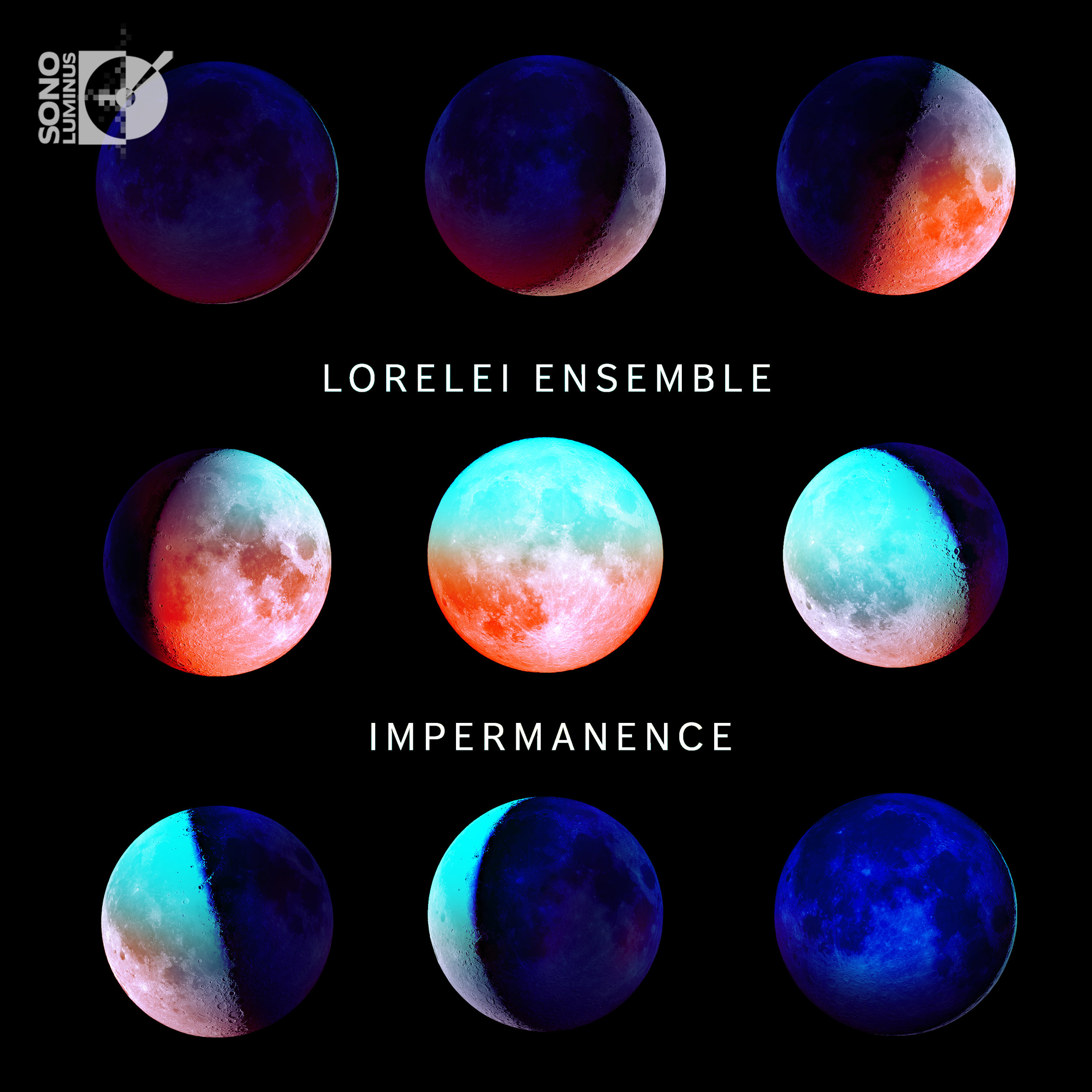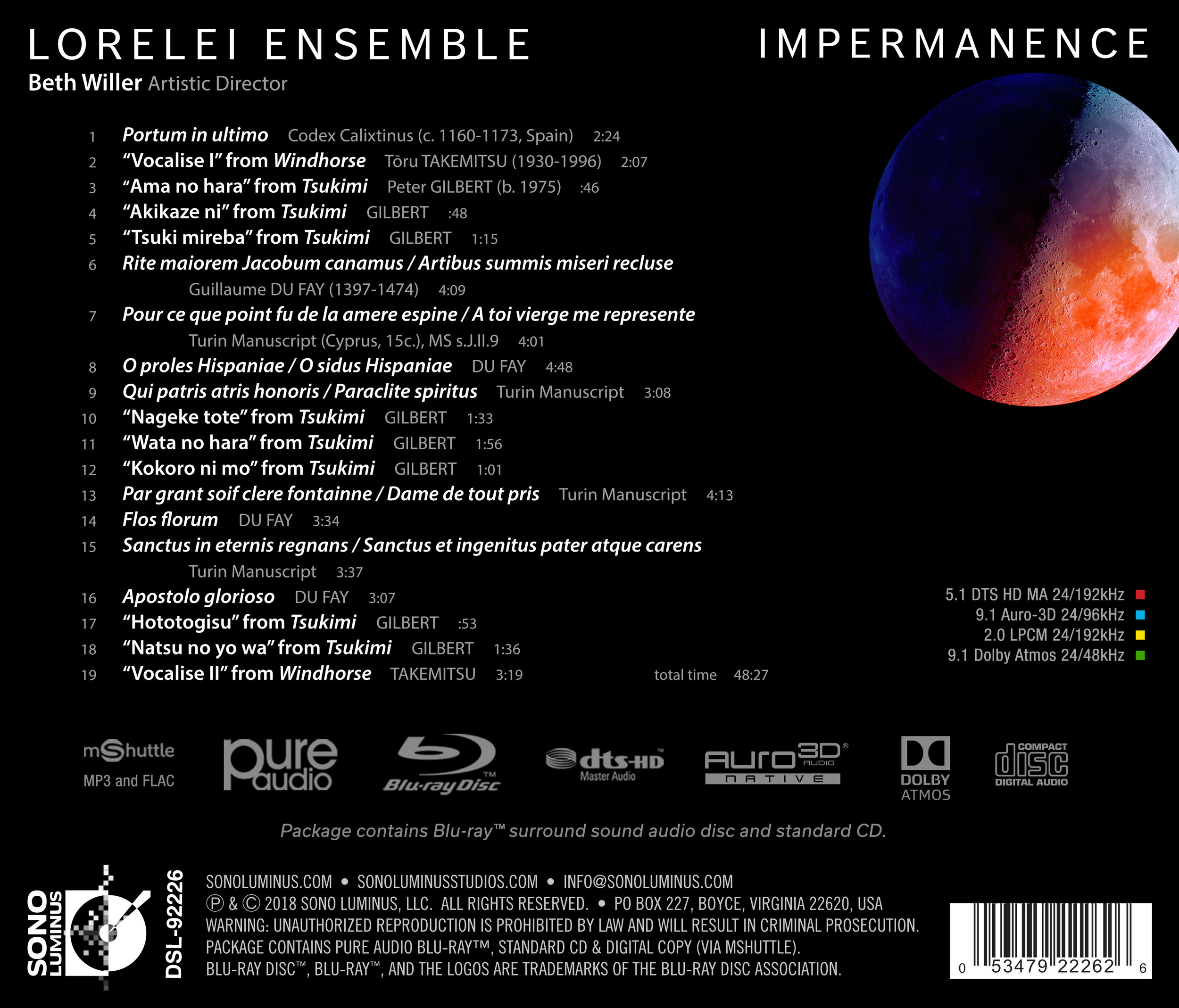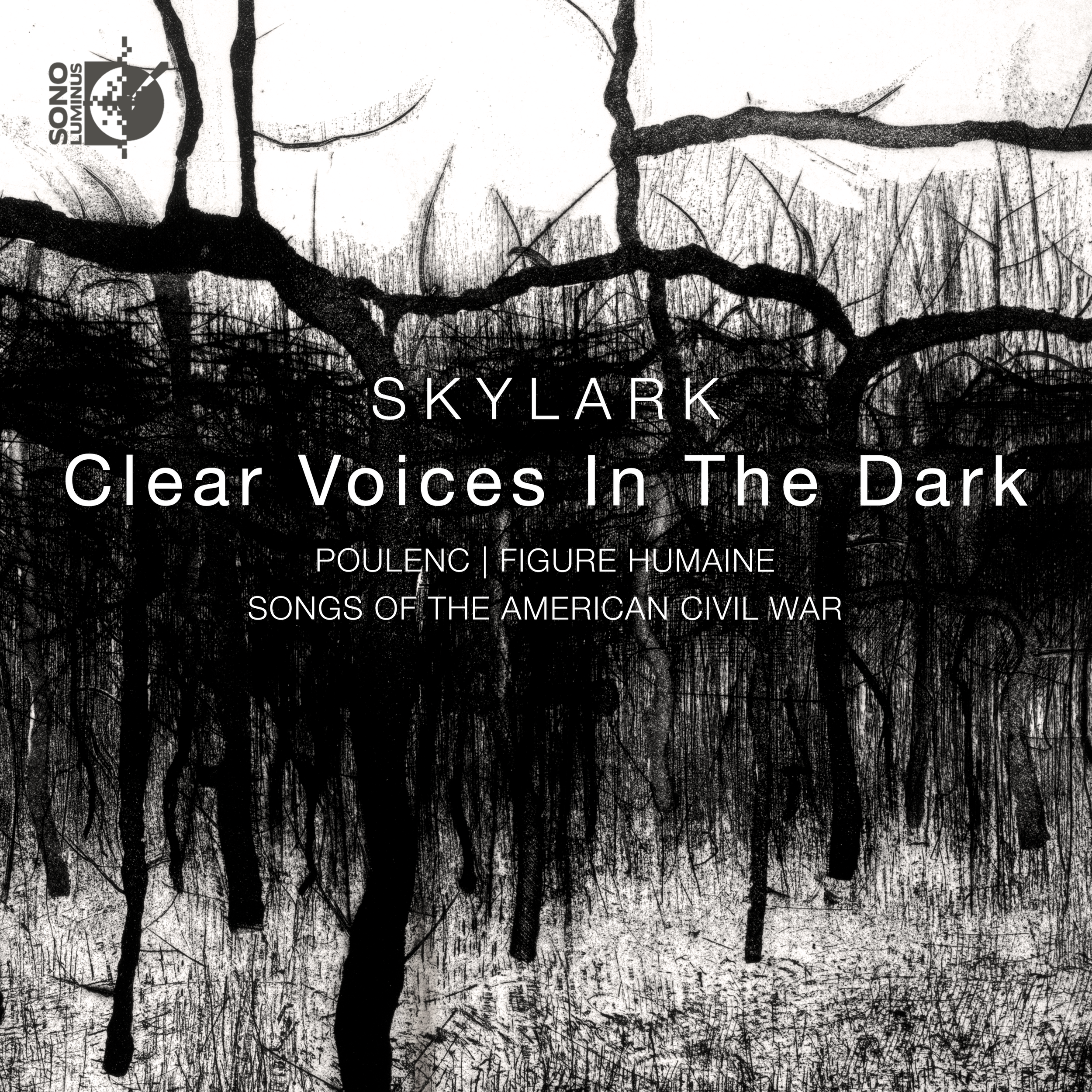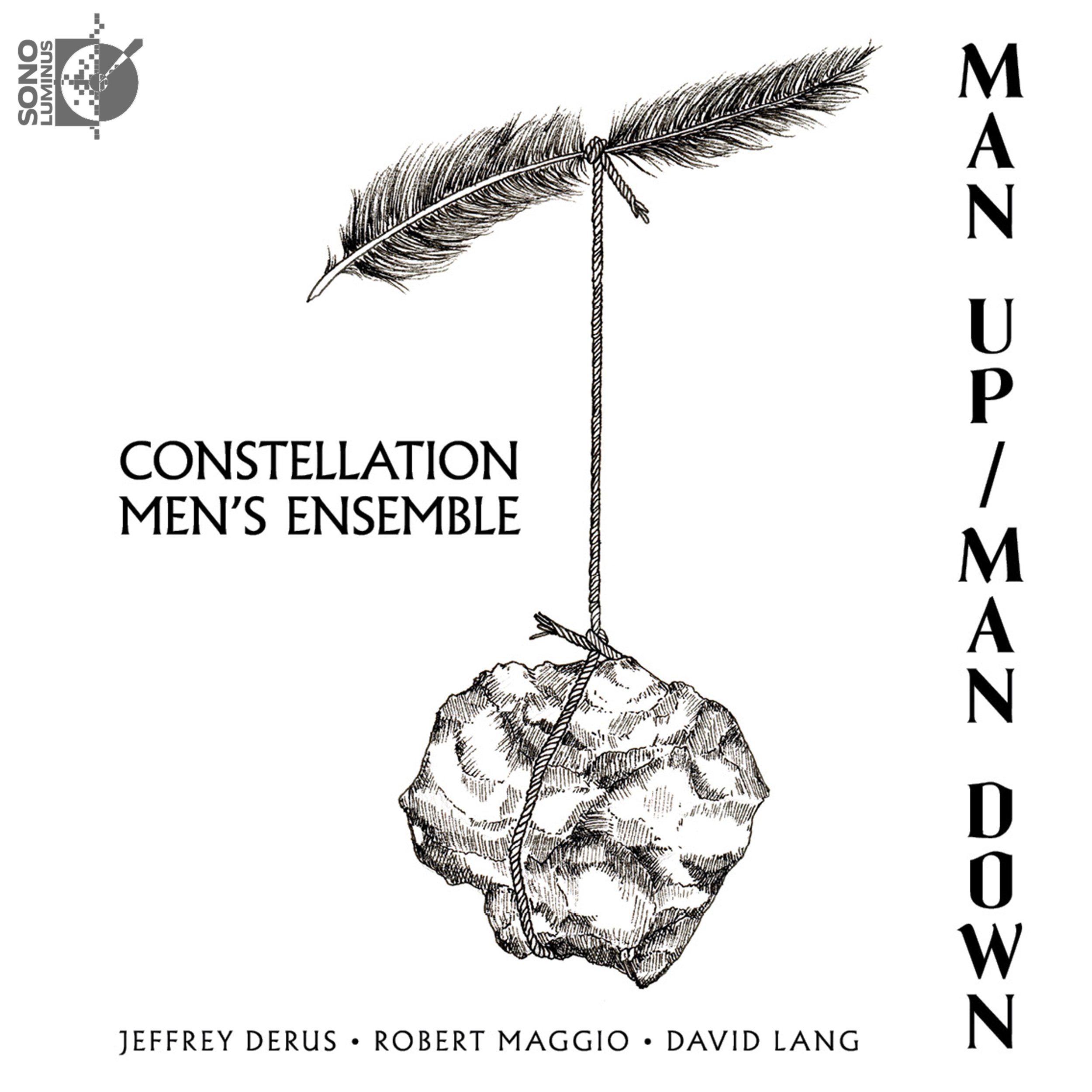Impermanence



Impermanence
Artist: Lorelei Ensemble
Composers: Codex Calixtinus, Tōru Takemitsu, Peter Gilbert, Guillaume Du Fay, Turin Manuscript
Format: 1 CD + 1 Pure Audio Blu-ray
DSL-92226
Migration of peoples across borders has shaped the human experience for millennia. While securing permanent shelter—a home—has become a goal for the majority of individuals in our world, migration remains one of our main strategies for survival. Today, tens of millions of individuals live a nomadic lifestyle as hunter gatherers or pastoralists. Pilgrims seek moral or spiritual significance through extended physical journeys. Immigrants and refugees seek freedom, stability, and safety in a new community or country. Whether physical or metaphysical, humanity survives by way of continuous movement—our culture, beliefs, and histories are marked by impermanence.
Impermanence is the bedrock of Buddhist philosophy and practice: continuous becoming as the truth of our existence. Buddhists consider this ever-evolving reality to be undeniable and inescapable. All temporal things—physical and mental—are subject to a continuous cycle of decline, decay, and rebirth. Fully embracing this concept is both humbling and freeing. It is particularly thrilling to consider this perspective as an artist committed to creating and delivering meaningful temporal experiences.
Music functions as a container of meaning, a vehicle we have used for centuries to express and grapple with the ineffable. We want to capture music—to write it down with a notation that clearly defines and preserves our musical ideas for generations to come. Yet, we have struggled to create a collection of symbols that can fully express our intentions—intentions that go far beyond pitch and rhythm. As Western notational systems have evolved, we have managed to refine this musical language, with each innovation allowing us to translate ideas in greater detail, and expand the possibilities of what could be recorded and communicated by the composer, to the performer. With this evolution came an ever-expanding musical vocabulary, new levels of complexity, and an increased desire to prescribe performance practices with the pen. But music resists this containment—the possibilities precede and outlast the technology that seeks to write them down. It is precisely this imperfection and constant evolution of notation that has allowed great music to survive for centuries. It is the unknown and the undefined corners of music that keep us coming back to re-interpret and re-invent ideas that well precede and defy modern practice.
The repertoire on this album is rife with symbolism and metaphor that further teases out concepts of impermanence, migration, and the transient nature of musical language. From the wordless vocalises of Takemitsu’s Windhorse depicting Tibetan nomads, to the 12th century polyphony of the Codex Calixtinus sung by pilgrims traveling along the Camino de Santiago, to the dramatic shifts of polyphonic style seen in the 15th century motets of Du Fay and the Turin Manuscript, to Peter Gilbert’s contemporary meditation on the phases of the moon—temporality is a common and unmistakable thread. And I suppose if one accepts impermanence fully, we might begin to see it in all of our work as artists.
—Beth Willer, 2018
Based in Boston, Lorelei Ensemble frequently joins forces with local artistic organizations to the enrich the city’s vibrant music scene. Collaborating ensembles include the Boston Symphony Orchestra, Tanglewood Music Center, A Far Cry, Boston Modern Orchestra Project, Odyssey Opera, Grand Harmonie, Boston Percussion Group, and Juventas New Music. In addition to its work in and around Boston, Lorelei maintains a national touring schedule, enjoying performances on numerous concert series, venues, and institutions across the country. Appearances include Carnegie Hall, the Metropolitan Art Museum, Isabella Stewart Gardner Museum, Tanglewood Festival of Contemporary Music, Trinity Wall, Five Boroughs Music Festival, Rockport Chamber Music, Chamber Music Columbus, Duke Performances, Schubert Club of St. Paul, Louisville Chamber Music Series, Monadnock Music Festival, Kent Hall Masters Series, and guest appearances at state and national conferences.
Track List
1 Portum in ultimo Codex Calixtinus (c. 1160-1173, Spain) 2:24
2 “Vocalise I” from Windhorse Tōru TAKEMITSU (1930-1996) 2:07
3 “Ama no hara” from Tsukimi Peter GILBERT (b. 1975) :46
4 “Akikaze ni” from Tsukimi GILBERT :48
5 “Tsuki mireba” from Tsukimi GILBERT 1:15
6 Rite maiorem Jacobum canamus / Artibus summis miseri recluse Guillaume DU FAY (1397-1474) 4:09
7 Pour ce que point fu de la amere espine / A toi vierge me represente Turin Manuscript (Cyprus, 15c.), MS s.J.II.9 4:01
8 O proles Hispaniae / O sidus Hispaniae DU FAY 4:48
9 Qui patris atris honoris / Paraclite spiritus Turin Manuscript 3:08
10 “Nageke tote” from Tsukimi GILBERT 1:33
11 “Wata no hara” from Tsukimi GILBERT 1:56
12 “Kokoro ni mo” from Tsukimi GILBERT 1:01
13 Par grant soif clere fontainne / Dame de tout pris Turin Manuscript 4:13
14 Flos florum DU FAY 3:34
15 Sanctus in eternis regnans / Sanctus et ingenitus pater atque carens Turin Manuscript 3:37
16 Apostolo glorioso DU FAY 3:07
17 “Hototogisu” from Tsukimi GILBERT :53
18 “Natsu no yo wa” from Tsukimi GILBERT 1:36
19 “Vocalise II” from Windhorse TAKEMITSU 3:19
Total time: 48:27
Release date: September 28, 2018
UPC: 053479222626
Quotes & Reviews
The 25 Best Classical Music Tracks of 2018
The calligraphic squiggles and vocal arabesques of Franco-Flemish Renaissance music come alive in the full-bodied and radiant sound of this female vocal ensemble. While it’s fun to dip in and sample, the album unfolds its full mesmerizing effect when you follow the singers on their squiggly line through music history, weaving together the ancient and the new in wondrous ways.
Corinna da Fonseca-Wollheim, The New York Times
This first recording by the Boston-based Lorelei Ensemble for Sono Luminus displays a stunning precision of harmony and intonation, and often spectacular virtuosity…
The sound has wonderful spatial dimensions and an airy quality.
Laurence Vittes, Gramophone
Choral Featured Album
Classical MPR
Lorelei Ensemble’s latest recording is awe-inspiring.
Impermanence, the spectacular new recording by the Lorelei Ensemble under the direction of Beth Willer, is even more impressive than their previous two…
Susan Miron, The Arts Fuse
Impermanence is an album on a mission…To my ear Lorelei Ensemble’s ambitious concept album works superbly.
Andrew Timar, The WholeNote
Listen to the Dufay motets for a demonstration of discipline and virtuosity, as well as sheer joy in performance. Equally impressive are excerpts from the Turin Codex. Pour ce que point is a particular highlight, the singers relishing the text and displaying astonishing intonation.
Justin Nguyen, Limelight
Zoë Madonna’s best classical albums of 2018
Harmonies flow with the grace of a nautilus shell. Contrary to the title, this album is here to stay.
Zöe Madonna, The Boston Globe
So, a disc with cross-currents and lineages, sung in a way that reflects on both simultaneously. The Lorelei Ensemble is an outstanding one, tonally and technically; whether one accepts the premise of their performance is a matter for the individual listener.
Jonathan Woolf, MusicWeb International
…sublime…
Jeremy Shatan, AnEarful
“…stunning precision of harmony and intonation…in audiophile sound…”
“The Lorelei Ensemble has a way of making music of academic curiosity sound fresh and new.”
“...spectacular new recording...”




